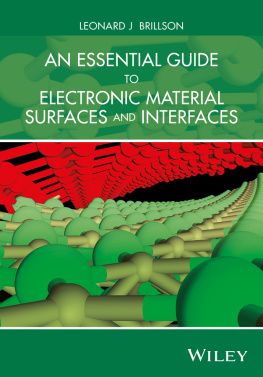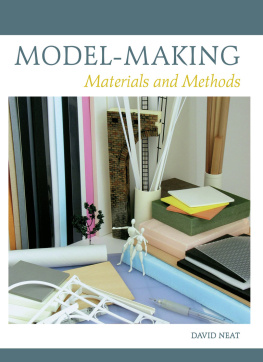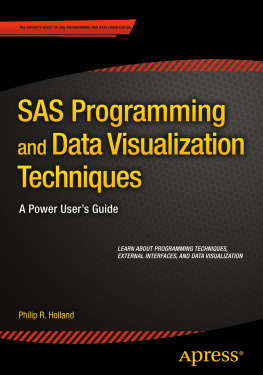
This edition first published 2016
2016 John Wiley & Sons, Ltd
Registered office
John Wiley & Sons Ltd, The Atrium, Southern Gate, Chichester, West Sussex, PO19 8SQ, United Kingdom
For details of our global editorial offices, for customer services and for information about how to apply for permission to reuse the copyright material in this book please see our website at www.wiley.com.
The right of the author to be identified as the author of this work has been asserted in accordance with the UK Copyright, Designs and Patents Act 1988.
All rights reserved. No part of this publication may be reproduced, stored in a retrieval system, or transmitted, in any form or by any means, electronic, mechanical, photocopying, recording or otherwise, except as permitted by the UK Copyright, Designs and Patents Act 1988, without the prior permission of the publisher.
Wiley also publishes its books in a variety of electronic formats. Some content that appears in print may not be available inelectronic books.
Designations used by companies to distinguish their products are often claimed as trademarks. All brand names and product names used in this book are trade names, service marks, trademarks or registered trademarks of their respective owners. The publisher is not associated with any product or vendor mentioned in this book.
Limit of Liability/Disclaimer of Warranty: While the publisher and author(s) have used their best efforts in preparing this book, they make no representations or warranties with respect to the accuracy or completeness of the contents of this book and specifically disclaim any implied warranties of merchantability or fitness for a particular purpose. It is sold on the understanding that the publisher is not engaged in rendering professional services and neither the publisher nor the author shall be liable for damages arising herefrom. If professional advice or other expert assistance is required, the services of a competent professional should be sought.
Limit of Liability/Disclaimer of Warranty: While the publisher and author have used their best efforts in preparing this book, they make no representations or warranties with respect to the accuracy or completeness of the contents of this book and specifically disclaim any implied warranties of merchantability or fitness for a particular purpose. It is sold on the understanding that the publisher is not engaged in rendering professional services and neither the publisher nor the author shall be liable for damages arising herefrom. If professional advice or other expert assistance is required, the services of a competent professional should be sought.
The advice and strategies contained herein may not be suitable for every situation. In view of ongoing research, equipment modifications, changes in governmental regulations, and the constant flow of information relating to the use of experimental reagents, equipment, and devices, the reader is urged to review and evaluate the information provided in the package insert or instructions for each chemical, piece of equipment, reagent, or device for, among other things, any changes in the instructions or indication of usage and for added warnings and precautions. The fact that an organization or Website is referred to in this work as a citation and/or a potential source of further information does not mean that the author or the publisher endorses the information the organization or Website may provide or recommendations it may make. Further, readers should be aware that Internet Websites listed in this work may have changed or disappeared between when this work was written and when it is read. No warranty may be created or extended by any promotional statements for this work. Neither the publisher nor the author shall be liable for any damages arising herefrom.
Library of Congress Cataloging-in-Publication Data
Names: Brillson, L. J., author.
Title: An essential guide to electronic material surfaces and interfaces / by Leonard J. Brillson, Ohio State University.
Description: Hoboken, New Jersey : John Wiley & Sons, Inc., [2016] | ?2016 | Includes bibliographical references and index.
Identifiers: LCCN 2016006828 | ISBN 9781119027119 (cloth) | ISBN 111902711X (cloth)
Subjects: LCSH: ElectronicsMaterials. | Surfaces (Technology)Analysis. | Spectrum analysis. | SemiconductorsMaterials.
Classification: LCC TK7871 .B748 2016 | DDC 621.381dc23 LC record available at http://lccn.loc.gov/2016006828
A catalogue record for this book is available from the British Library.
ISBN: 9781119027119
Preface
This book is intended to introduce scientists, engineers, and students to surfaces and interfaces of electronic materials. It is designed to be a concise but comprehensive guide to the essential information needed to understand the physical properties of surfaces and interfaces, the techniques used to measure them, and the methods now available to control them. The book is organized to provide readers first with the basic parameters that describe semiconductors, then the key features of their interfaces with vacuum, metal, and other semiconductors, followed by the many experimental and theoretical techniques available to characterize electronic material properties, semiconductor surfaces, and their device applications, and finally our current understanding of semiconductor interfaces with metals and with other semiconductors understanding that includes the methods, both macroscopic and atomic-scale, now available to control their properties.
Electronic material surfaces and interfaces has become an enormous field that spans physics, chemistry, materials science, and electrical engineering. Its development in terms of new materials, analytic tools, measurement and control techniques, and atomic-scale understanding is the result of nearly 70 years of activity worldwide. This book is intended to provide researchers new to this field with the primary results and a framework for new work that has developed since then. More in-depth information is provided in a Track II, accessed online, that provides advanced examples of concepts discussed in the text as well as selected derivations of important relationships. The problem sets following each chapter provide readers with exercises to strengthen their understanding of the material presented. Figures for use by instructors are available from the accompanying website. For more advanced and detailed information, the reader is referred to Surfaces and Interfaces of Electronic Materials (Wiley-VCH, Weinheim, 2010) as well as the lists of Further Reading following each chapter.
On a personal note, the author wishes to acknowledge his Ph.D. thesis advisor, Prof. Eli Burstein at the University of Pennsylvania and Dr. Charles B. Duke at Xerox Corporation in Webster, New York for their inspiration and mentoring. Here at The Ohio State University, he thanks his many Electrical & Computer Engineering and Physics colleagues who have provided such a stimulating environment for both teaching and research. Most of all, the author's deepest thanks are to his wife, Janice Brillson, for her patience, love, and support while this book was written.
Columbus, Ohio July 31, 2015
About the Companion Websites
This book is accompanied by Instructor and Student companion websites:
www.wiley.com\go\brillson\electronic
The Instructor website includes
- Supplementary materials
- PPT containing figures
- Advanced topics
- Solutions to problems
The student website includes
- Supplementary materials
- Advanced topics
Next page








